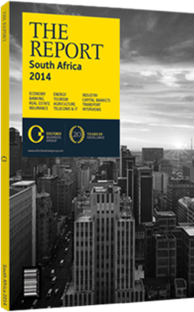Visitor numbers begin to overcome post-World Cup excess capacity
The accommodation sector is showing signs of recovery from its post-World Cup slump, appearing its healthiest since 2010 as demand catches up to absorb the excess capacity delivered for the tournament. The swings in the fortunes of hotel properties over the past decade was as much due to volatility in capacity as demand. From 2004 to 2007 there was insufficient stock, and the main property metrics of occupancy rate, average room rates (ARR), and revenue per available room (revpar) presented the accommodation sector as an attractive one. In response, a period of new hotel construction was initiated from 2005 to 2010, and by the time of the World Cup, the number of accommodations had almost doubled. As a result, while the tournament provided a major boost for tourism as a whole, the performance metrics for individual properties were less rewarding, as overcapacity resulted in non-optimal occupancy levels and rate competition.
“One of the challenges that still remains in the tourism sector is the excess capacity created from the World Cup,” Enver Duminy, CEO of Cape Town Tourism, told OBG. “However, we are emerging from the post-tournament dip in Cape Town and are starting to transition from an environment of oversupply.”
Swinging Back
Since 2010 new hotel launches have been limited and several establishments have exited the market entirely, providing for a much-needed market correction. In 2012 occupancy rates stood at 56.5%, ARR was at R855 ($81), and total room revenue registered at R10.7bn ($1bn), the first gains since 2007. In its 2013 Destination Africa publication, PwC reported that overall spending on rooms rose 17.8% over 2012. The firm is projecting total room revenue to grow at a compound annual rate of 9.2% until 2017.
Measured Times Ahead
According to a report published by property management group Broll, available rooms are expected to increase at a compound rate of approximately 1.5% per year between 2012 and 2017, by which time hotels are expected to see an increased occupancy rate of 68.7%. Generally, 70% is considered the benchmark rate that the industry aspires to as it represents a comfortable middle ground of neither over nor under supply. Broll’s pipeline projections are mirrored closely by PwC, which expects the number of rooms to grow at just below 1% annually through to 2017, during which time average room rate growth will compound 5.4% to R936 ($89).
Making Margins
When considering the quality of stock on offer, ARRs under the $100 threshold are deemed good value by global standards and can be kept proportionately lower as the costs incurred to construct a property are substantially less than those in most Western markets. AECOM, in its Africa Property and Construction Handbook 2013, measures costs in dollars per sq metre for a hotel in Johannesburg to be $1690 for a budget property and $2230 for a luxury site. These figures compare favourably to New York ($2400 and $5030), London ($2610 and $5100) and Sydney ($3280 and $4550).
When it comes to recurring expenses, however, property owners are feeling margin pressure. In the Tourism Business Council of South Africa’s second-quarter 2014 Tourism Business Index, “costs of inputs” were rated by industry respondents as the most negative factor in business performance for the sector. Electricity and municipal costs constituted the second-largest cost outlay for hotels after salaries. Electricity prices in South Africa have escalated by over 170% over the past five years.
Spreading Out
It appears that developers are taking heed of the lessons to be learned from the World Cup overbuild, as, despite favourable forecasts, anticipated new construction seems moderated and in line with market projections. With less scope for new capacity on their home turf, the country’s main hotel chains are looking to leverage their regional knowledge and recognised brands to capture a foothold in African hotspots. “International chains may have launched successful hotels in Europe, the US and East Asia, but unless you understand the lay of the land in Africa, it is a struggle,” Arthur Gillis, CEO of Protea Hotels, told OBG.
You have reached the limit of premium articles you can view for free.
Choose from the options below to purchase print or digital editions of our Reports. You can also purchase a website subscription giving you unlimited access to all of our Reports online for 12 months.
If you have already purchased this Report or have a website subscription, please login to continue.

